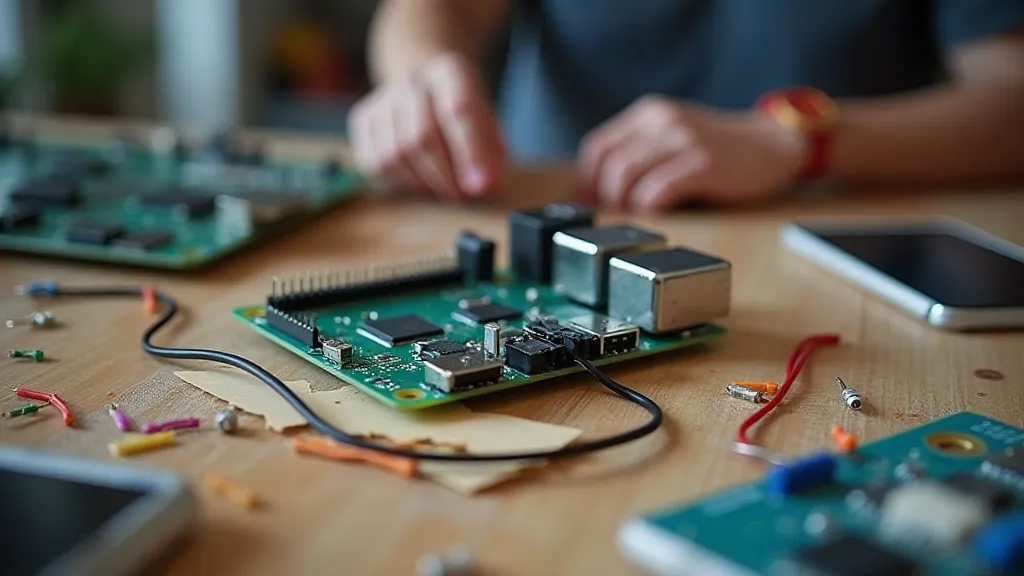Raspberry Pi: Seeds of Automation – Cultivating Smart Home Ecosystems
There's a quiet beauty in things built to last, a resonance that transcends mere functionality. I think of my grandfather’s accordion. It wasn’t pristine; years of travel, countless performances, and the inevitable wear and tear were etched into its bellows and keys. But each imperfection told a story - a wedding in a small town, a lively polka at a festival, the comfort it offered during lonely evenings. It was a handcrafted marvel, an intricate dance of metal, wood, and air. And now, as I delve into the world of Raspberry Pi and smart home automation, I find a similar appreciation for the power of building something bespoke, something that truly reflects my needs and desires, rather than relying on pre-packaged, often inflexible solutions.
For years, the promise of a truly smart home felt… incomplete. Off-the-shelf solutions often felt restrictive, demanding adherence to pre-defined routines and ecosystems. The "magic" felt like a carefully constructed illusion, hiding complexity and limiting customization. This is where the Raspberry Pi comes in – the digital equivalent of finding a pile of beautifully aged wood, ready to be shaped into something unique.
The Raspberry Pi: More Than Just a Computer
The Raspberry Pi, for those unfamiliar, is a small, single-board computer. Initially conceived to promote basic computer literacy, it’s rapidly become a cornerstone of the maker community. Its low cost, incredible versatility, and vibrant online support make it the perfect entry point into the world of DIY electronics. It's a blank slate upon which to build a smart home infrastructure, far more customizable than any commercial system. Think of it less as a replacement for your existing smart devices, and more as the central nervous system that allows them all to communicate and function harmoniously.

Building Your Smart Home Foundation
The first step is, of course, acquiring a Raspberry Pi. There are several models available; the Raspberry Pi 4 Model B is a solid choice for most smart home applications, offering plenty of processing power and connectivity options. You'll also need a microSD card (at least 16GB) to install the operating system. Raspberry Pi OS (formerly Raspbian) is the recommended choice for beginners, offering a familiar desktop environment and a wealth of software packages.
Once you have your Pi up and running, you need to decide what you want it to control. This can range from simple tasks like controlling lights and thermostats to more complex operations like security systems and media servers. There are numerous software options available for managing your smart home: Home Assistant is a popular, open-source platform known for its flexibility and extensive integration capabilities. OpenHAB is another robust option with a focus on device compatibility. These platforms provide a user-friendly interface for configuring devices, creating automations, and monitoring your home's status.
Inter-Device Communication: The Key to Integration
The true power of a Raspberry Pi-based smart home lies in its ability to seamlessly integrate devices from different manufacturers. Unlike commercial systems, which often lock you into specific ecosystems, the Raspberry Pi can communicate with a wide range of protocols, including Wi-Fi, Bluetooth, Zigbee, and Z-Wave. Zigbee and Z-Wave are low-power, mesh networking protocols specifically designed for home automation devices. While they require a dedicated USB dongle for your Raspberry Pi, they offer greater range and reliability than Wi-Fi for many devices.
Imagine having your Philips Hue lights synchronize with your Sonos speakers, triggered by a motion sensor in your hallway. Or your thermostat adjusting based on the weather forecast, retrieved by your Raspberry Pi. These are the kinds of custom routines that become possible when you break free from the limitations of off-the-shelf solutions.
Crafting Custom Automations: Beyond the Basics
Once your devices are connected, the real fun begins – creating custom automations. These are the "if-then" statements that define how your smart home responds to different conditions. For example: “If motion is detected in the backyard after sunset, then turn on the porch light and send a notification to my phone.” The possibilities are truly endless.
Beyond simple triggers, you can incorporate more complex logic. Use sensors to monitor temperature, humidity, light levels, and more. Use data from external APIs to incorporate weather forecasts, traffic conditions, or even stock prices into your automations. The Raspberry Pi’s processing power allows you to handle complex calculations and make decisions based on real-time data.
My grandfather's accordion wasn't simply played; it was *felt*. It responded to the musician's touch, creating a unique experience each time. Similarly, a Raspberry Pi-based smart home isn't just about convenience; it’s about creating a truly responsive and personalized environment. It’s about understanding your habits, anticipating your needs, and simplifying your life in ways that generic systems simply can’t.

Overcoming Limitations and Troubleshooting
Building a Raspberry Pi-based smart home isn't without its challenges. Troubleshooting network connectivity issues, dealing with device compatibility problems, and keeping your system secure are all ongoing tasks. However, the vast online community provides ample support and resources. Forums, tutorials, and open-source projects are readily available to help you overcome any obstacles you encounter.
Security is paramount. Keep your Raspberry Pi's operating system and software up to date. Use strong passwords and enable two-factor authentication. Isolate your smart home network from your main network to prevent unauthorized access.
The End Result: A Home That Truly Understands You
Ultimately, building a Raspberry Pi-based smart home is more than just a technical exercise; it’s a creative endeavor. It’s about taking control of your environment and shaping it to your liking. It's about understanding the underlying technology and customizing it to meet your specific needs. Just as my grandfather carefully maintained and played his accordion, finding joy in its craftsmanship and responsiveness, you can cultivate a smart home ecosystem that is truly your own – a reflection of your personality, your needs, and your passion for innovation.






